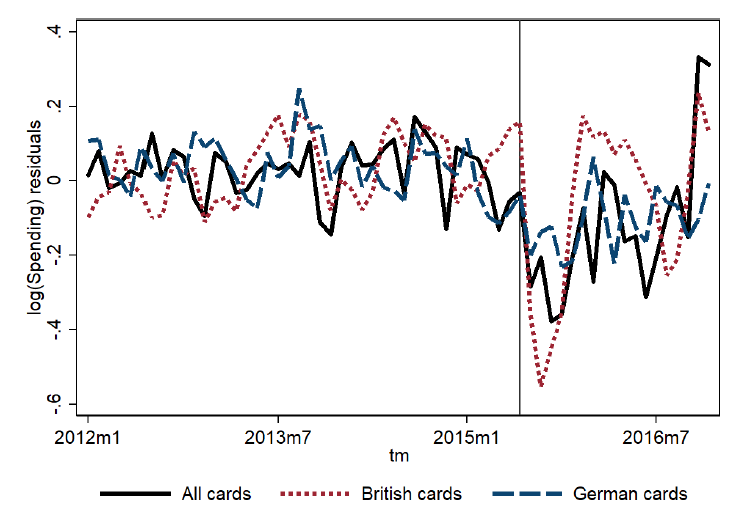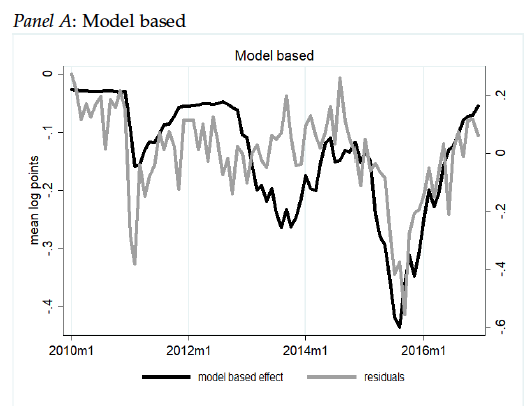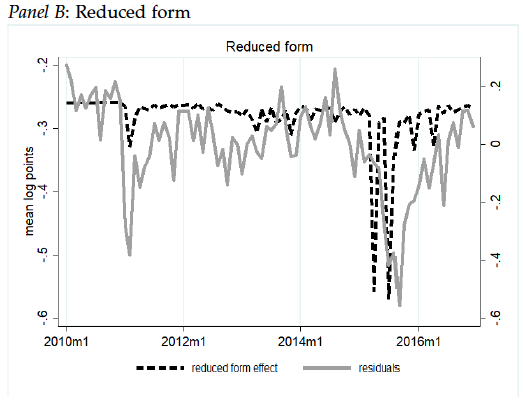Source images by cottonbro from Pexels
Media reporting plays a critical role in spreading information and shaping people’s perception about risks. The current coronavirus crisis makes this all too clear. But news coverage itself is selective and often draws attention to dramatic events. For example, terrorism in the United States caused fewer than 0.01% of the nation’s deaths in 2016 but was covered by newspapers more than any other cause. Cancer and heart disease caused more than 60% of all deaths but were represented in only 15% of news. News bias of this sort can severely affect behavior and beliefs when individuals tend to heavily weigh their judgments toward more recent information, making new opinions biased toward that latest news. In psychology, this is known as “availability heuristic” and has received a lot of attention.
Through this channel, news coverage can have macroeconomic consequences. Many developing countries only receive international media attention when something terrible happens. Violent events, in particular, usually attract intense news reporting. This sort of “bad news bias” is typically not discounted by the readers as they use availability heuristics and this can shape the international image of the affected countries as insecure. Travel into these countries is then affected and this will hinder trade and foreign investment. Given the economic and social benefits of an open and integrated economy, violence reporting on countries could then have detrimental consequences for their economic development.
Still, the economic effects of news coverage are not well understood as it is hard to separate and quantify the impact of an event from the impact that may be due to media coverage of that event. In BSE Working Paper No. 1141, “Terror and Tourism: The Economic Consequences of Media Coverage,” Timothy Besley, Thiemo Fetzer and Hannes Mueller tackle this challenge by using the case of tourism. Using two novel datasets, the authors are able to separate the effect of an event at tourist destinations from the coverage of that event at the home countries of tourists. This allows them to investigate the role of news coverage.
Main findings:
- There is a robust negative relationship between the intensity of reporting on violence and tourist spending, suggesting that a bad news bias can economically harm the countries that suffer from it.
- Their estimates suggest that if a country is regarded as dangerous for several months aggregate spending at that destination will fall by about 55 percent. Sixty percent of that effect comes through news coverage.
- The negative news effect is much more severe for tourists who originate in countries with a free press. This supports the idea that individuals in countries with a free press rely more on news coverage to get informed about risks in faraway places.
- The negative effect of a violent event fades over time and completely dissipates after about nine months if coverage does not persist.
- News on other issues can “drown out” bad news. The effect of bad news is much less severe if there are a lot of other news on the same destination at the same time.
It is tempting to see these results as an endorsement of the restriction of press freedom in some circumstances or active news management to drown out bad news. When countries want to overcome the economic effects of a continuous risk like a Covid-19, for example, it is tempting to suggest that media reports of the case load should be suppressed. However, the results on press freedom suggest that such behavior could have broader repercussions in which local economic agents do not form their opinion based on local news.
Why terror and tourism?
Tourists from different origins evaluate the same destination in order to decide on a holiday. If different origin countries report differently on the same events, then tourists from different countries may react differently to the same events.
Departing from this reasoning, the present paper uses two novel data sources to address the extent to which news coverage shapes the economic impact of violent events. It combines monthly aggregated and anonymized credit card data on tourism spending from 114 origin countries and 5 tourist destinations (Turkey, Egypt, Tunisia, Israel and Morocco) with a large corpus of more than 446 thousand newspaper articles covering news on the 5 destination countries from a subset of 57 tourist origin countries.
The first data set provides a measure of tourist activity, whilst the second one captures the news environment. Using methods from computational linguistics and supervised machine learning, the news data provides a measure of the relative intensity of reporting on violence at the dyad which is then matched with the data on spending flows.
Authors document that violent events in a destination are followed by sharp spikes in negative reporting at origin and contractions in tourist activity. Specifically, if media-reporting on a specific dyad switches from reporting on topics unrelated to violence to covering only stories about tourists being targeted, then tourism spending drops by about 56 percent a month later. Furthermore, this effect is persistent, lasting for about nine months following the coverage.
A key finding is that the effect of violence and news coverage varies markedly across both destination and origin countries. Figure 1 shows the correlation of aggregate spending with a specific violent incident in which thirty-nine tourists, mostly UK citizens, were killed on June 26th 2015 in Sousse, Tunisia. The figure highlights that aggregate tourism spending falls immediately in the months following the attack. However, tourism spending from Britain dropped much more compared to tourism spending from Germany. The paper argues that this heterogeneity is down to the differential intensity of news reporting on the event in the two tourist origin countries.
Figure 1: Overall aggregated spending patterns of British- and German-issued cards in Tunisia in the wake of the Sousse attack

Reduced-form evidence
As a first exploration, authors present a reduced-form evidence on the relationship between spending and violence. Regarding country-level violence, there is compelling evidence of a negative link between violence and card spending. For instance, spending decreases in the range of 4% to 7.6% after an increase of violence by one standard deviation.
Additionally, they explore dyad-specific responses to violence as mediated via news coverage, both on violence against tourists and on fatal violence in general. Results show that if the share of stories about tourist violence were to go from zero to one then tourism spending would fall by 42 percentage points. For overall fatalities, findings are only slightly smaller.
Taken together, these results show that there is a highly robust relationship between aggregated spending and violence which depends not only on violent events but how intensively they are covered by news media.
An economic model of events, beliefs, and economic activity
Motivated by these findings, the authors fit a statistical model of violence, reporting and spending to the data, and provide quantitative estimates of the impact of violent news coverage on tourism spending.
The framework is characterized by agents are trying to evaluate whether a given destination (the state) is safe or dangerous and form beliefs about the probability that this is the case. Since there are many different sources of information that a potential tourist could use to infer the safety of a holiday destination, individual information sets are modelled as different and agents are categorized into two types: “naïve” tourists who only observer destination-specific news coverage from their home country; and “sophisticated” ones who look at the underlying data on violent incidents and use this to update their beliefs.
In the best fit to the data, authors find that more than half of the weight in terms of updating beliefs comes from country-specific news reporting but there is significant heterogeneity across countries and events. The effect of media reporting is twice as large for countries with a free press than for countries with a less free press. Moreover, the model indicates that high levels of reporting of non-violent events can effectively “drown out” reporting about violent events and that there is some persistence in spending to violence and news reporting. By conjecturing that past beliefs could affect contemporaneous tourist activity, the pattern of persistence in the spending response could be explained by more than 40 percent of tourists booking their vacations more than three months in advance.
The proposed structured model of beliefs based on Bayesian updating does a good job at capturing the pattern of changes in tourism spending in response to news and violence. Figure 2 illustrates this conclusion. For the destination country of Tunisia, the model captures both the early decline and recovery at the beginning of the Arab spring (left-hand panel). The model-based prediction also compares favourably with that from the reduced-form model as shown in the right-hand panel.
Figure 2: Comparison of model- and reduced-form implied effects on tourism spending in Tunisia


Altogether, the paper shows that the media is indeed powerful in affecting international flows of tourists and that there is a robust negative relationship between violence, reporting on violence and tourism spending. On top of that, countries differ in their news coverage and this can explain the significant country-level heterogeneity in responses to violence.




